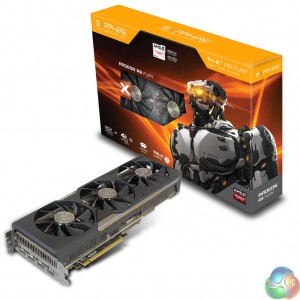
The Sapphire Tri-X Radeon R9 Fury ships in a colourful box featuring an image of a robot. We didn't get a retail box and accessories, the image above was supplied by Sapphire directly.
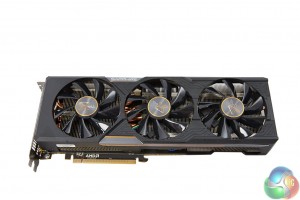
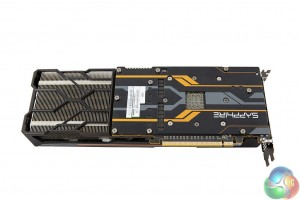
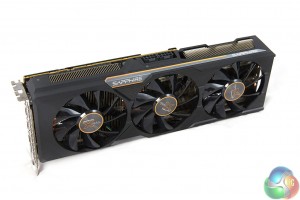
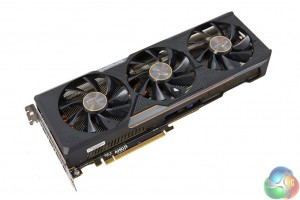
Sapphire have fitted a huge three fan cooler to the Fury PCB underneath with an extension plate supporting the long cooler above. It is a 2.2 slot card and measures 306 (L) x 114 (W) x 49 (H).
Sapphire claim the cooler assembly is extended beyond the PCB to improve air circulation. The cooler shroud is mounted directly to the PCB frame. This Fury card is also fitted with a thick aluminum backplate – always good to see as this can help eliminate unpleasant hotspots under intensive load conditions.
The cooler is fitted with three Aerofoil fans with dual ball bearings. There is an advanced fan control system to set temperature by arbitrating multiple sensors and Intelligent Fan Control (IFCII) stops fans under light load.
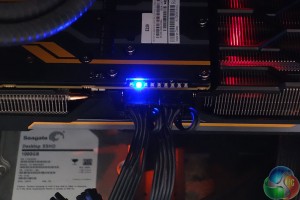
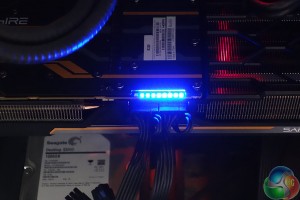
The card incorporates an LED along the side, which is easily seen during operation. This LED system indicates the state of activity. It also highlights AMD ZeroPower Mode – when a single LED is showing. When all 8 LEDs are lit, the card is fully loaded.
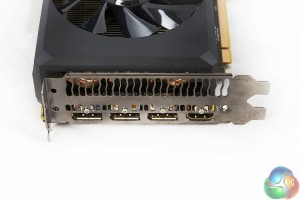
AMD have ditched VGA and DVI connectivity on the rear I/O plate – opting for DisplayPort 1.2a and HDMI ports. We have no problems with this, especially as the card ships with a DVI converter cable, however there is one, rather niggling issue. AMD are still using HDMI 1.4a ports on their cards which are limited to 30hz at Ultra HD 4K.
If you want to game on a large Ultra HD 4K television it is likely it won’t have a DisplayPort connector – only a small percentage do. You are therefore not able to get 60hz at the native resolution … and no one wants to play games at 30hz. Nvidia cards have had full HDMI 2.0 support now for quite some time. This may not be an issue for many, but we have already noticed enthusiast gamers complaining about AMD’s lack of HDMI 2.0 support, on our Facebook page. I think this is a rather glaring oversight by AMD.
On a more positive note, the card supports 4 monitors natively and up to six monitors with an MST hub or by Daisy chaining. There is full support for AMD Freesync, VSR, Liquid VR and bridgeless Crossfire.
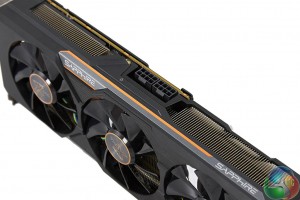
The Fury card takes power from two 8 pin PCI e connectors – which are in the ‘middle' of the card, but actually at the end of the PCB itself if you look closely.
It is worth pointing out that this card has two BIOS configurations – one specifically installed to help with overclocking. I will detail this in more detail on the next page.
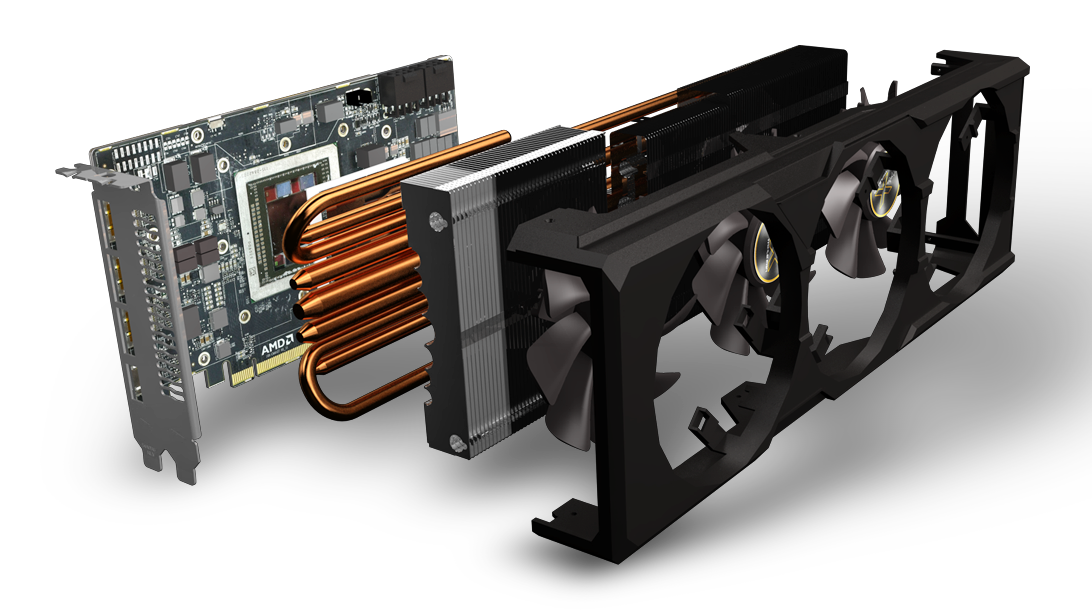
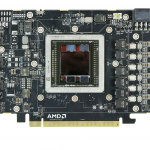
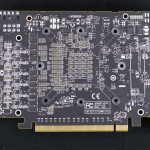
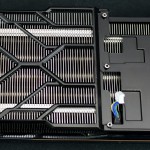
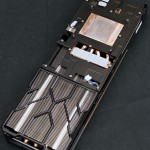
Sapphire asked us not to disassemble the Fury and they supplied their own board/cooler shots – pictured above. The cooler is comprised of a multi heatpipe array with 1x 10mm, 2 x 8mm and 4x 6mm heatpipes. They are using high density stacked cooler fins on the heatsinks. A solid copper transfer plate is incorporated into the cooler – to help maximise heat transfer.
 KitGuru KitGuru.net – Tech News | Hardware News | Hardware Reviews | IOS | Mobile | Gaming | Graphics Cards
KitGuru KitGuru.net – Tech News | Hardware News | Hardware Reviews | IOS | Mobile | Gaming | Graphics Cards


